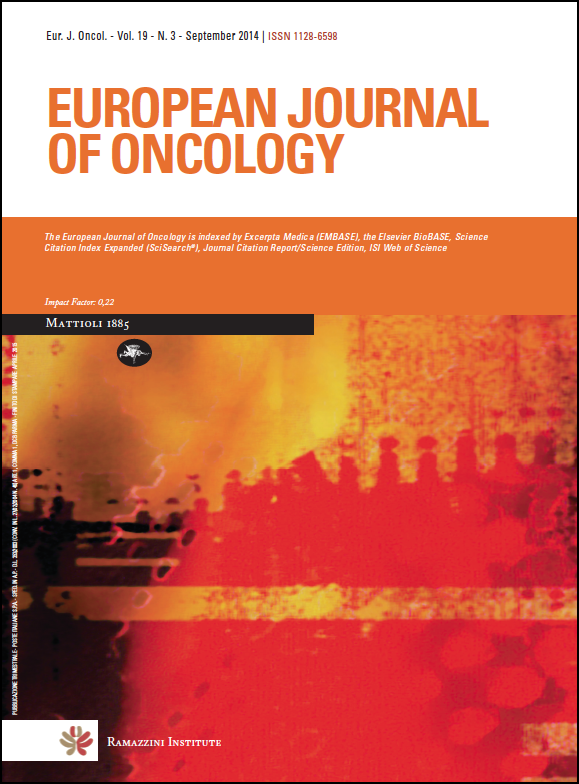Targeting cancer stem cells in hepatocellular cancer: a review
Keywords:
cancer, stem cells, hepatocellular cancer, micro-RNA, molecular markerAbstract
In connection with the self renewal property of stem cells, surprising similarities can be found in cancer cells. Tumors are composed of rapidly proliferating cells, postmitotic and differentiated cells. Since, however, the latter two types cannot self renew, the idea has arisen that tumors contain self renewing stem cells termed “Cancer Stem Cells” (CSCs) occupying the top of the cancer cell hierarchy. CSCs may have molecular signaling pathways responsible for self renewal as in stem cells. CSCs are often considered resistant to chemotherapy and targeting such cells and eradicating them may improve the prognosis of cancer patients. Hepatocellular carcinoma (HCC) is the sixth most diagnosed cancer, representing the second leading cause of world mortality and thought to be driven by CSCs. There are several antigenic markers and molecular signaling pathways such as Hedgehog, TGF-β, Wnt & Notch which modulate CSCs and account for tumorigenecity and hence progression of HCC. Additional factors such as micro-RNA may also contribute to hepatocarcinogenesis by regulating stemness of CSCs. Thus, understanding and characterizing the initiating CSCs and identifying the molecular targets will be helpful in preventing and treating HCC. Such molecular pathways and targets are discussed in this review.Downloads
Published
Issue
Section
License
OPEN ACCESS
All the articles of the European Journal of Oncology and Environmental Health are published with open access under the CC-BY Creative Commons attribution license (the current version is CC-BY, version 4.0 http://creativecommons.org/licenses/by/4.0/). This means that the author(s) retain copyright, but the content is free to download, distribute and adapt for commercial or non-commercial purposes, given appropriate attribution to the original article.
The articles in the previous edition of the Journal (European Journal of Oncology) are made available online with open access under the CC-BY Creative Commons attribution license (the current version is CC-BY, version 4.0 http://creativecommons.org/licenses/by/4.0/).
Upon submission, author(s) grant the Journal the license to publish their original unpublished work within one year, and the non exclusive right to display, store, copy and reuse the content. The CC-BY Creative Commons attribution license enables anyone to use the publication freely, given appropriate attribution to the author(s) and citing the Journal as the original publisher. The CC-BY Creative Commons attribution license does not apply to third-party materials that display a copyright notice to prohibit copying. Unless the third-party content is also subject to a CC-BY Creative Commons attribution license, or an equally permissive license, the author(s) must comply with any third-party copyright notices.

